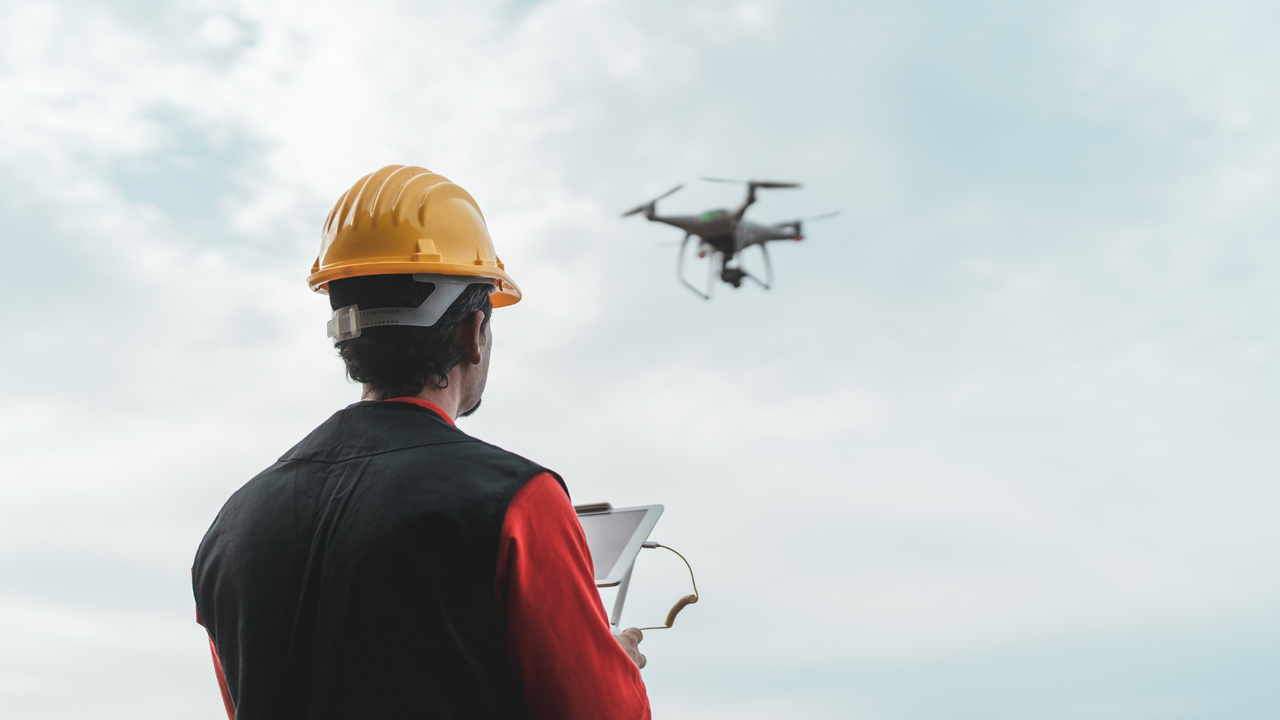Opportunities in Construction

In the United States, the construction industry is big business. In 2019, this sector of the economy as a whole was worth $1.3 trillion! That is excellent news for commercial drone pilots.
Once you have passed the Part 107 exam, you can offer your service to the trillion-dollar giant that construction is. So, let's talk about a few services you can provide in support of this sector and some considerations on the equipment you will need for each.
Survey/Mapping
Drones are excellent tools for creating detailed and highly accurate maps. Even without super precise measurements, drones are useful for construction operations.
The maps generated by drones can be used for planning, creating digital twins, and environmental studies. Before drones, it took aerial surveys with crewed aircraft or ground survey crews to accomplish the same task. Both methods are typically more expensive and less efficient than using UAVs.
Several programs make map building easy. If interested, check out DroneUp, DroneDeploy, Litchi, and Pix4D. These are just a few options out there, but are some of the industry standards.
One question often asked is how accurate drone maps and surveys can be. While it is possible to produce detailed maps with just a standard entry-level commercial drone (Skydio 2+, DJI Mavic 2 Pro, etc.), these platforms cannot produce survey-level accuracy on their own.
To achieve cm level accuracy (the accuracy most surveys produce), you will need to use equipment that increases the positional accuracy of the data collected. Some examples include Ground Control Points (GCPs) and base stations for Real-Time Kinematic (RTK) or Post-Processing Kinematic (PPK). Additional equipment is often expensive and will require special training.
So, if you would like to get work in mapping, you can start with a standard drone but not for surveys. You'll need to commit time and money to get the equipment and training required for survey-level accuracy jobs.
Stockpile Measurements
Unless you have worked in construction, you probably haven't paid too much attention to what the average construction site looks like. Next time you see one, take a minute to check it out.
Many sites require sand, gravel, or other bulk materials. Monitoring the levels of these materials is essential. Construction builds are tied to contracts with strict penalties for missing deadlines. It is not unheard of for an entire project to come to a halt after running out of gravel or sand.
Traditionally, the levels of stockpiles are calculated manually with tools like theodolites and software. The process can be slow and, in many cases, forces operations in the area to stop, so that ground crews remain safe while taking measurements.
Drones avoid all of this. You can offer your services in calculating the level of these stockpiles using drones like the Skydio 2+ and Mavic 2 Pro. All you need is a program like DroneDeploy to do the rest.
Project Management
Most builds, even the construction of a single-family home, have a project manager. These professionals keep track of everything needed to remain on time and on budget.
Medium to large size construction sites are complex beasts. Carefully orchestrating people, materials, and deadlines takes planning and coordination. Having an aerial view of the site is a game changer.
Any 3-axis gimbal drone that can hold steady and capture 4K video will do. Flights can show the progress of structures, the location and utilization of assets like heavy equipment, and identify areas of concern.
Depending on the project, some managers may require several flights a week. You may even find the project managers just want to watch the live feed, requiring little to no post-production efforts on your part.
Marketing
A final aspect of construct where commercial drone pilots are needed is marketing. In addition to completing the project they are building, construction firms are always looking for the next undertaking. It's why most sites have large billboards advertising the company responsible for the on-site work.
You and your drone can capture various phases of a build, from grading the soil to the final ribbon cutting. In many ways, this aspect of working in the construction industry is no different than the marketing videos you produce for selling real estate. It is a great place to start and requires no specialized equipment at the entry-level.
These are just a few services you can provide to the construction industry. Remember that drones are usually less expensive than traditional methods. They also are safer since they remove the need to place people around heavy machinery or the need to halt work in an area being surveyed. Make these your selling points, and you will be well on your way to a career as a commercial drone pilot.
Article Written by David Daly


